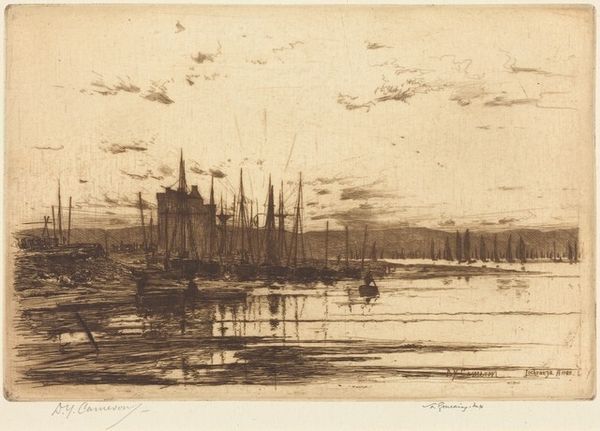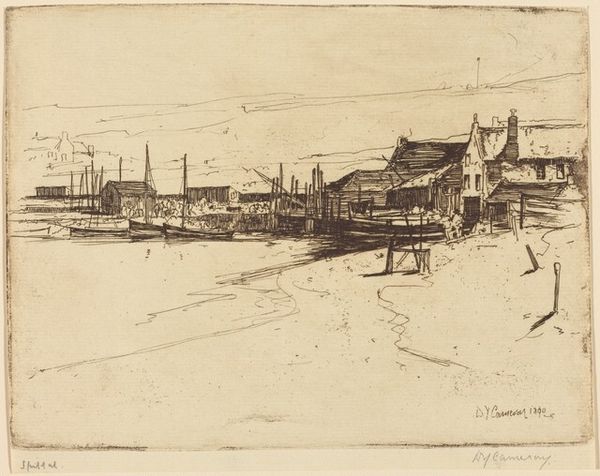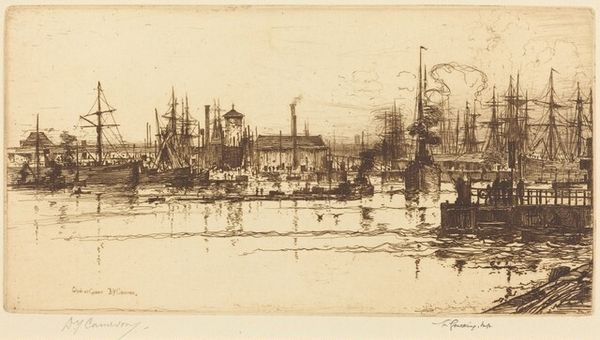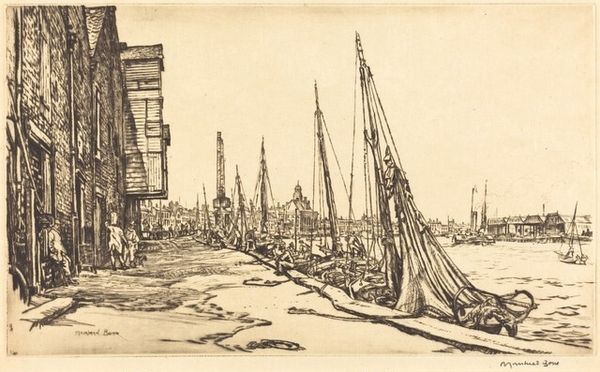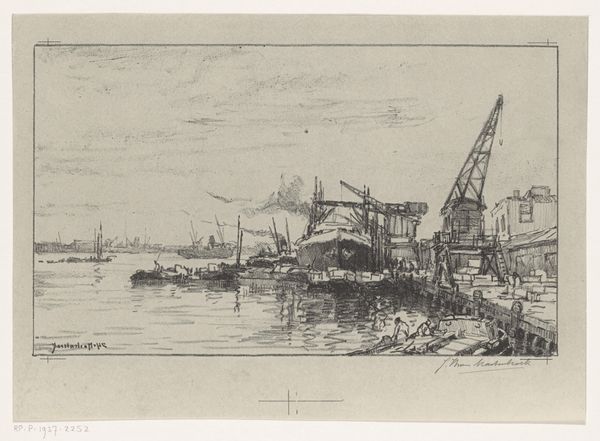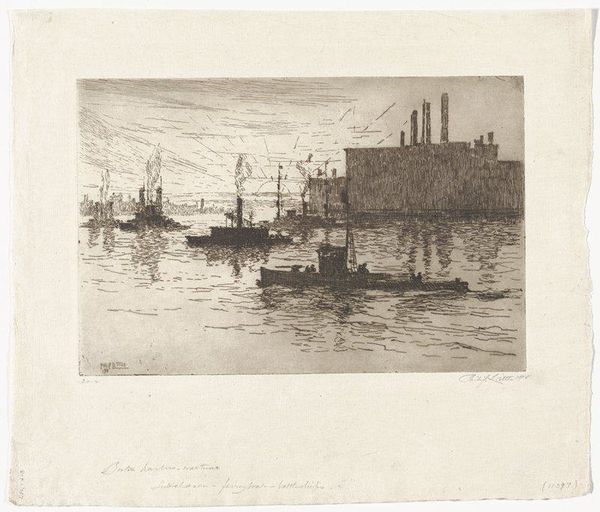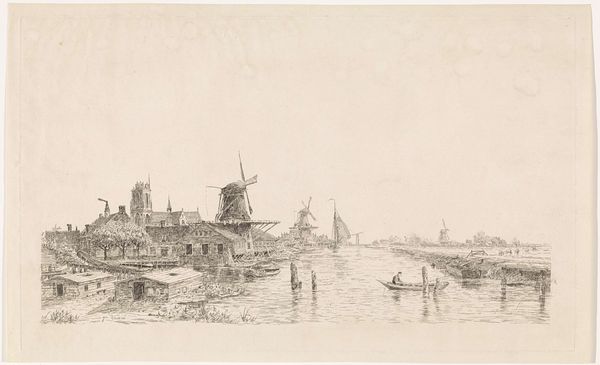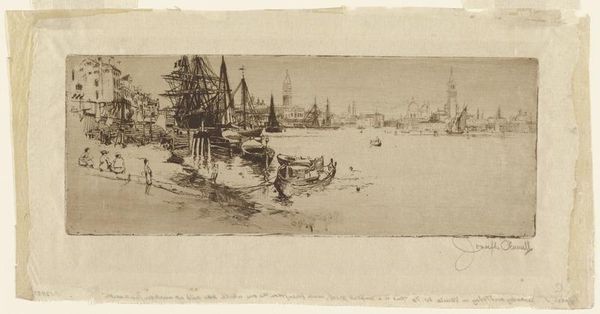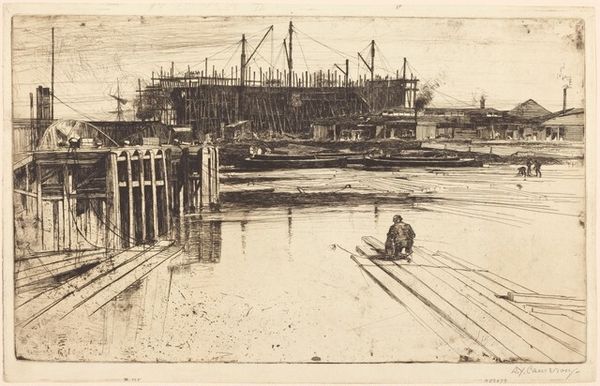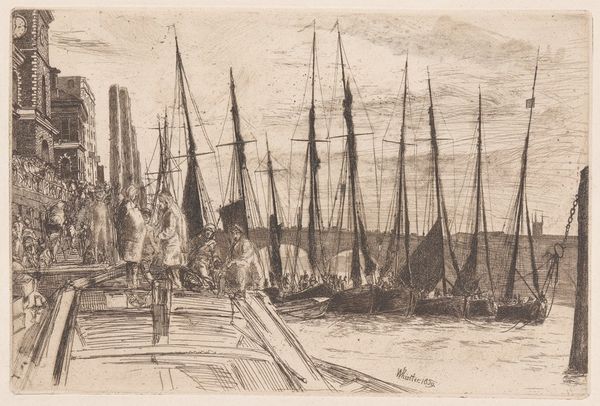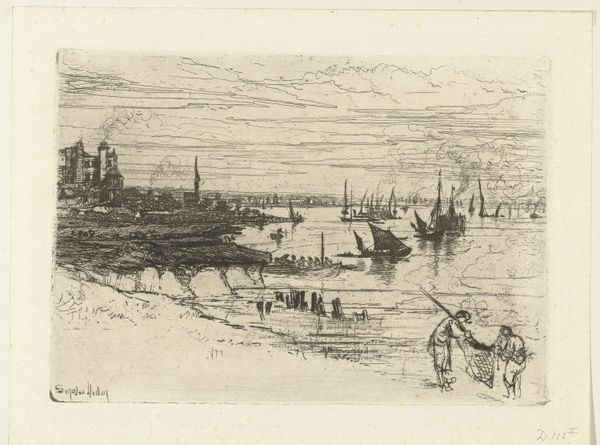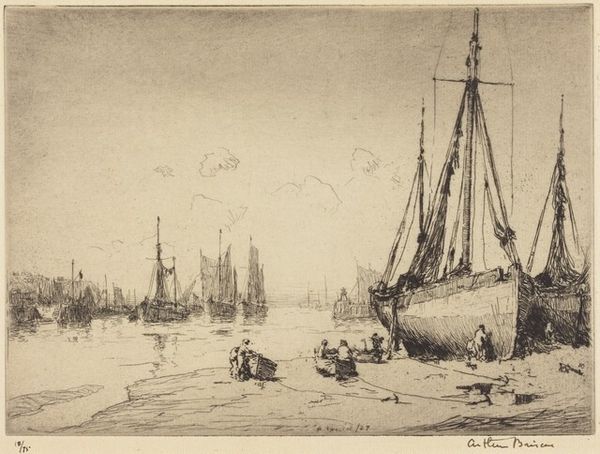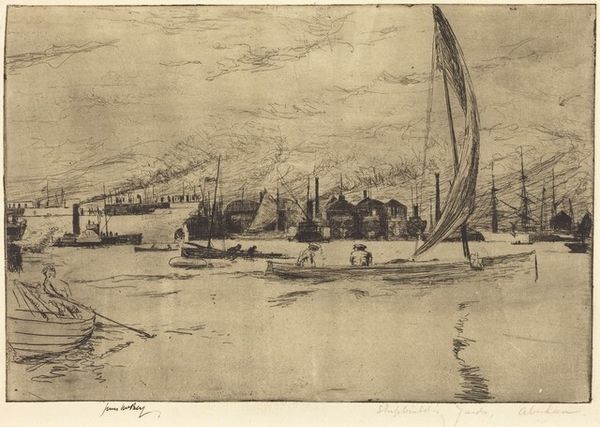
print, etching
# print
#
etching
#
arts-&-crafts-movement
#
landscape
#
cityscape
#
realism
Copyright: National Gallery of Art: CC0 1.0
Curator: I'm struck by the energy here. There's a real sense of industry; even though it's rendered in etching, it feels dynamic, bustling. The masts create this spiky silhouette against a somewhat gloomy sky. Editor: Indeed. The work before us is "Glasgow Harbor," an etching by David Young Cameron from 1889. To truly appreciate this image, we must understand the context of Glasgow at that time, a major industrial center of the British Empire. This piece visually encapsulates that era, highlighting labor, trade, and the very architecture of capitalism. Curator: You can certainly feel that pulse in the lines of the ships and buildings. The detail is intriguing—little clusters of people going about their work along the docks. To me, the boats feel less like symbols of commerce and more like skeletal, cage-like structures dominating the harbor. What can we glean from these ships? Editor: Well, ships are complex cultural symbols. They represent both connection and separation—carrying people, goods, and ideas, but also serving as a physical barrier between lands. The multitude of masts could reflect Glasgow’s status as a gateway but also serve as a somber reminder of the exploitative underpinnings of such booming industries. Think of all that transpired on waters across the centuries, good and evil. Curator: Looking at the crowd on the pier, they could be anyone from dockworkers to recent immigrants seeking new beginnings, all tied together by shared geographical circumstances and economic pressures. Editor: Right. Moreover, the etching process itself speaks volumes. Etching's reliance on acid suggests transformation. To what extent do you think Cameron captures a moment of industrial flux and reflects a cultural unease that may have emerged during a period of so-called progress? Curator: Perhaps he's capturing a kind of uneasy dance between the grand promises of industry and the grittier reality experienced on the ground. The sky, subtly etched, hints at a feeling that prosperity might come at the cost of something intangible—like a collective identity or value. Editor: Ultimately, what began for me as a somewhat bleak depiction of labor has deepened into a layered narrative that offers a powerful and nuanced perspective on industrial expansion and society. Curator: I'll leave contemplating the individuals in the crowd—how might they view themselves within the immensity of ships and trade that are etched into this single picture?
Comments
No comments
Be the first to comment and join the conversation on the ultimate creative platform.
